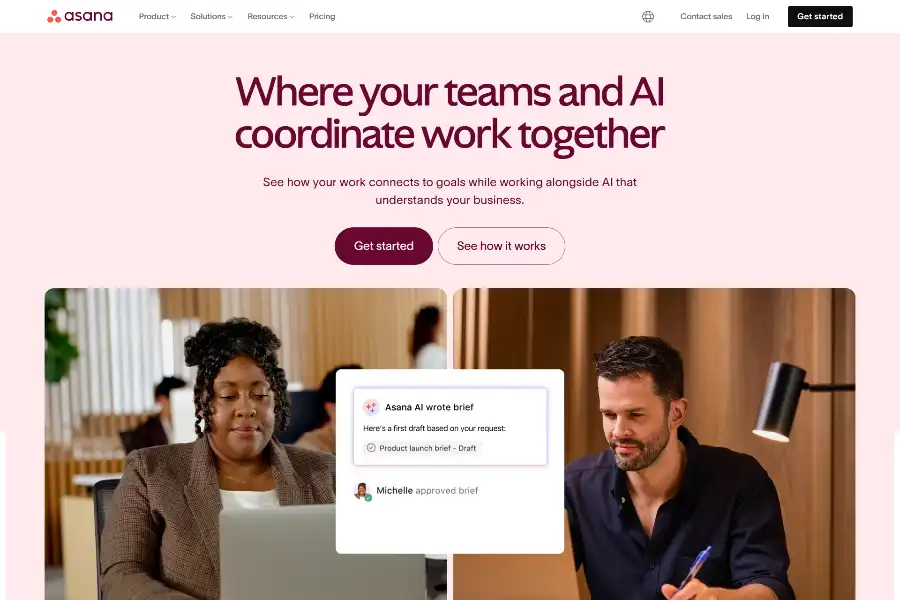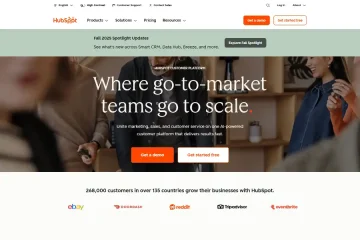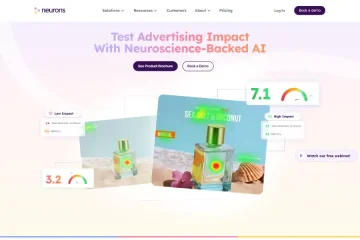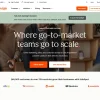
Asana in 2025: How AI-Powered Work Management Is Redefining Productivity for Modern Teams
Introduction – From Task Lists to AI Command Centers
In less than two decades, project management has evolved from whiteboards and sticky notes to cloud-native platforms that orchestrate the daily output of globally distributed teams. Asana—founded in 2008 by Facebook co-founder Dustin Moskovitz and ex-Google engineer Justin Rosenstein—has consistently been at the forefront of this shift. Today, Asana positions itself not merely as a task tracker but as an “AI teammate” that understands the context of every goal, dependency, and deadline inside an organization. Drawing on publicly available information from its website, user case studies, and third-party software reviews, this article unpacks how Asana’s artificial-intelligence layer, Goals & Reporting engine, and 300-plus integrations combine to create a single source of truth for strategic execution. We will explore the underlying technology, the differentiated feature set, real-world deployments across retail, media, and FMCG giants, user sentiment, competitive advantages, and the roadmap that keeps Asana ahead of the curve.
Technical Architecture – The Data Fabric Behind Asana AI
Cloud-Native Core and Graph-Based Data Model
Asana is built on Amazon Web Services (AWS) and uses a micro-services architecture that decouples front-end React components from a Scala-based back end. Every task, subtask, comment, attachment, and custom field is stored as a node in a directed graph database. This graph structure allows Asana AI to infer relationships—such as which deliverables roll up to quarterly OKRs, or how a design asset blocks a marketing campaign—without brittle relational joins.
Machine-Learning Pipeline
Asana AI ingests billions of interaction events per month (task completions, reassignments, due-date changes, and goal updates) into a real-time feature store powered by Apache Kafka. Gradient-boosted decision trees predict the likelihood of a project slipping, while transformer-based language models (similar to BERT) parse natural-language task descriptions to extract deadlines, assignees, and dependencies. These models are trained on anonymized, opt-in data and are re-deployed via Kubernetes to ensure near-zero downtime updates.
Privacy & Compliance
SOC 2 Type II, ISO 27001, and GDPR compliance are baked into the architecture. Customer data is encrypted in transit (TLS 1.3) and at rest (AES-256), while enterprise tenants can opt for regional data residency in the EU, US, or APAC.
Feature Deep-Dive – What Makes Asana More Than a To-Do List
Goals & Reporting – Connecting Daily Tasks to Strategic Outcomes
Traditional project tools track “what” teams are doing; Asana links every task to the “why.” Users can set multilevel Objectives & Key Results (OKRs) that automatically roll up progress from underlying projects. AI highlights risks such as a KR trending off-track three weeks before the quarter ends, suggesting mitigation actions like re-allocating headcount or tightening scope.
Asana AI – A Contextual Co-Worker
The AI layer surfaces in three primary interfaces:
- Smart Goals: When a manager types “launch new loyalty program by Q4,” Asana AI generates a nested goal hierarchy with recommended milestones, owners, and due dates based on historical velocity of similar programs.
- Smart Status: Instead of manual check-ins, teams receive AI-drafted status updates that summarize blockers, scope changes, and priority shifts across all connected projects.
- Smart Rules: Users can create no-code automations in plain English—e.g., “If a task tagged ‘Urgent’ sits unassigned for more than two hours, add it to the triage project and ping the on-call engineer.” The system translates the sentence into executable logic without a single line of code.
Universal Inbox & My Tasks – Personalized Prioritization
Asana AI ranks each individual’s task list by predicted impact on company goals, taking into account deadlines, dependencies, and the user’s historical completion patterns. The result is a daily “focus list” that dynamically reorders as new information arrives.
Proofing & Digital Asset Management
Creative teams can annotate images, PDFs, and videos directly in Asana. AI spots version conflicts and surfaces the most recent approved asset, reducing time wasted searching through chat threads or Dropbox folders.
Portfolios & Workload
Portfolios give executives a live, bird’s-eye view of all strategic initiatives. AI overlays capacity heat-maps to flag when a high-priority project is understaffed or when a team member is at risk of burnout.
Market Applications – From Start-ups to 85% of the Fortune 100
Retail & FMCG – Danone’s Global Rollout
Simon Levinson, Global Digital Manufacturing Process Innovation Manager at Danone, credits Asana with making “everything shareable.” By templatizing best-practice projects, Danone cut program replication time by 30%. AI-driven insights revealed that plant-level audits were the longest pole in the tent; reallocating two senior engineers reduced average audit duration by four days.
Media – Spotify’s Advertising “Air Traffic Control”
Spotify manages hundreds of concurrent ad campaigns. Eugenia Contreras, Associate Manager, likens Asana to “air traffic control.” Real-time dashboards surface campaign bottlenecks before revenue is at risk. The AI feature that predicts campaign readiness—based on asset hand-offs and approval cycles—has improved on-time launches from 78% to 94% year-over-year.
Publishing – Gannett’s Centralized Ecosystem
Marketing Operations Director Steven Tai notes that Asana’s cross-functional visibility accelerated campaign planning cycles by 25%. Before Asana, stakeholders used email and spreadsheets; now, an AI-curated “campaign brief” auto-assembles relevant assets, stakeholder comments, and historical performance metrics.
Technology Start-ups – LaunchDarkly’s Feature Flag Coordination
LaunchDarkly coordinates engineering, product, and customer success teams around feature flags. Smart Rules automatically assign post-release monitoring tasks to on-call SREs when a flag event triggers an anomaly alert in Datadog, shortening mean time to recovery (MTTR) by 18%.
User Sentiment & Market Reception
Net Promoter Score (NPS)
According to G2’s Spring 2025 Grid Report, Asana holds an NPS of 68—above the project-management category average of 41. Reviewers praise “the seamless marriage of high-level strategy with ground-level execution.”
Adoption Metrics
Asana’s own data (December 2023) indicates that 85% of the Fortune 100 now use the platform, spanning more than 150 countries and 20 million paid seats. Average weekly active usage per seat grew 27% year-over-year, driven largely by AI features launched in late 2023.
Critical Feedback
Power users on Reddit’s r/projectmanagement note that the initial learning curve for advanced custom fields and rules can be steep. Asana has responded with an AI “onboarding coach” that auto-configures templates based on a five-question survey, reducing setup time for new teams by 40%.
Pricing & Packaging – From Free to Enterprise Scale
- Basic (Free): Up to 15 team members, unlimited tasks, calendar, and board views.
- Premium ($10.99/user/mo): Adds Timeline, custom fields, advanced search, and proofing.
- Business ($24.99/user/mo): Includes Portfolios, Workload, advanced integrations (Salesforce, Adobe Creative Cloud), and Smart Goals.
- Enterprise (Contact Sales): SAML SSO, data export, priority support, and AI-driven admin insights.
Non-profit and educational discounts range from 30–50%. Notably, all AI capabilities are included at the Business tier and above, positioning Asana as competitively priced compared to Monday.com AI (add-on) and Jira Premium + Atlassian Intelligence (separate SKU).
Competitive Landscape – Where Asana Wins
Against Monday.com
Monday.com focuses on colorful, widget-heavy dashboards. Asana counters with deeper goal alignment and AI-generated status narratives that reduce manual writing. According to a 2024 Forrester TEI study, Asana delivered a 437% ROI over three years versus Monday’s 286%, largely due to reduced status-meeting overhead.
Against Notion
Notion excels as a knowledge base but lacks native advanced project-management features such as workload balancing or portfolio-level burndown charts. Asana’s graph model provides superior dependency tracking, critical for multi-team product launches.
Against Jira
Jira remains the go-to for granular engineering issue tracking, yet its interface intimidates non-technical stakeholders. Asana’s universal UX and AI summarization bridge the gap between engineering and go-to-market teams, reducing “tool fatigue” in hybrid organizations.
Future Roadmap – Ambient Work and Generative Insights
2025 H2 – Ambient Work
Asana is beta-testing an “Ambient Work” SDK that embeds task creation into Slack threads, Figma comments, and Gmail conversations. NLP models auto-convert “@john can you update the QBR deck by Friday?” into an Asana task assigned to John, with the Gmail thread attached as context.
2026 – Generative Insights Studio
A no-code, conversational interface will allow executives to ask, “Which marketing campaigns underperformed last quarter and why?” The system will query the graph, pull performance data from integrated ad platforms, and generate a slide deck with root-cause analysis and recommended experiments.
2026 – Industry-Specific AI Bundles
Asana plans to release pre-trained AI bundles for healthcare (HIPAA-compliant), financial services (SOX-ready), and manufacturing (ISO 45001). Each bundle will include tailored risk models and compliance templates.
Conclusion – The AI-Powered Operating System for Work
Asana has successfully transformed from a sleek task manager into an AI-powered operating system that aligns daily execution with long-term strategy. Its graph database, privacy-first ML pipeline, and relentless focus on user-centric design have earned the trust of 85% of the Fortune 100. Whether a global CPG company accelerating plant audits, a streaming giant orchestrating ad campaigns, or a start-up shipping features faster, teams turn to Asana to reduce friction, surface insights, and amplify human impact. As the platform evolves toward ambient work and generative analytics, organizations that adopt Asana today are positioning themselves on the leading edge of the next productivity revolution.











